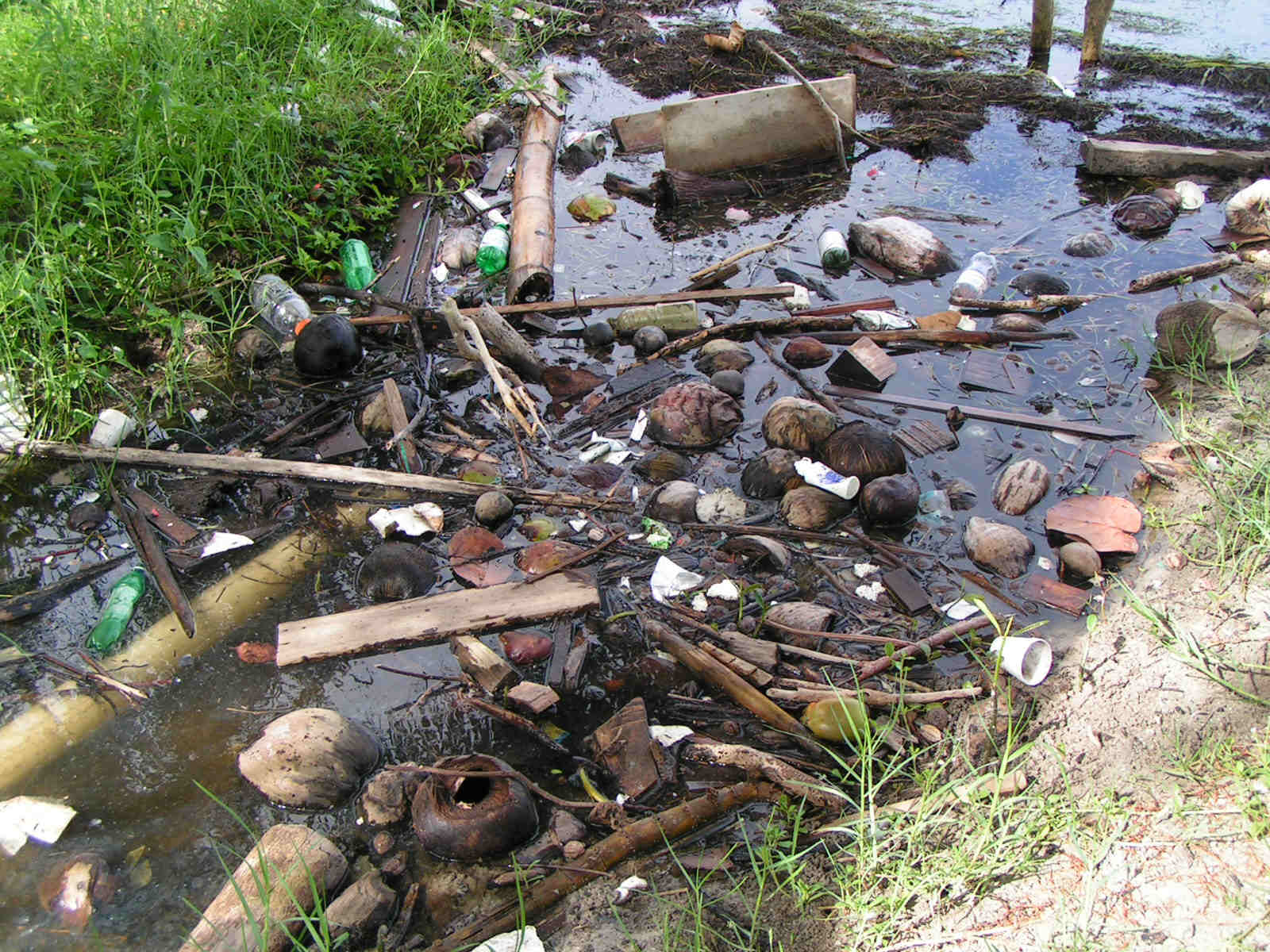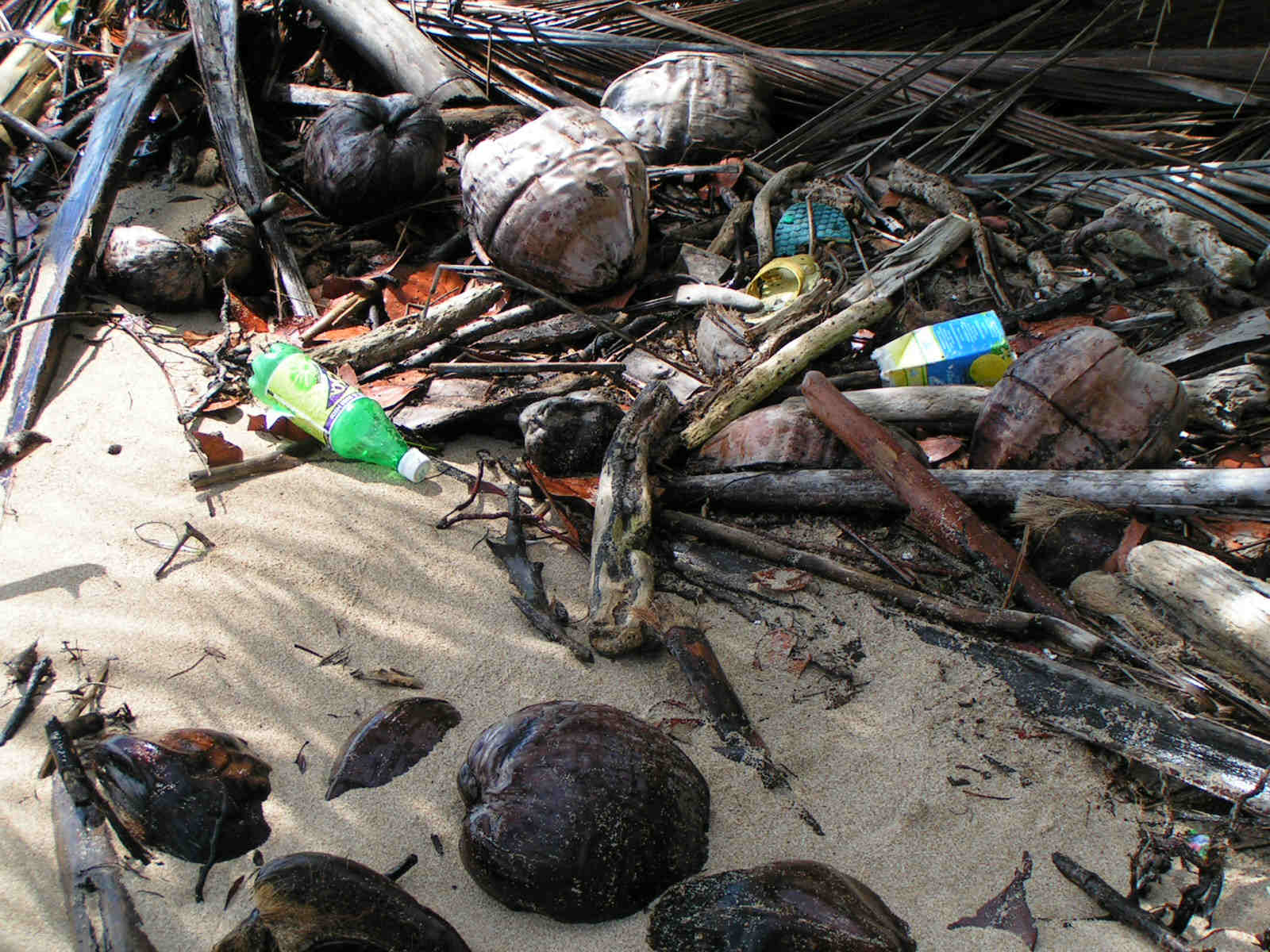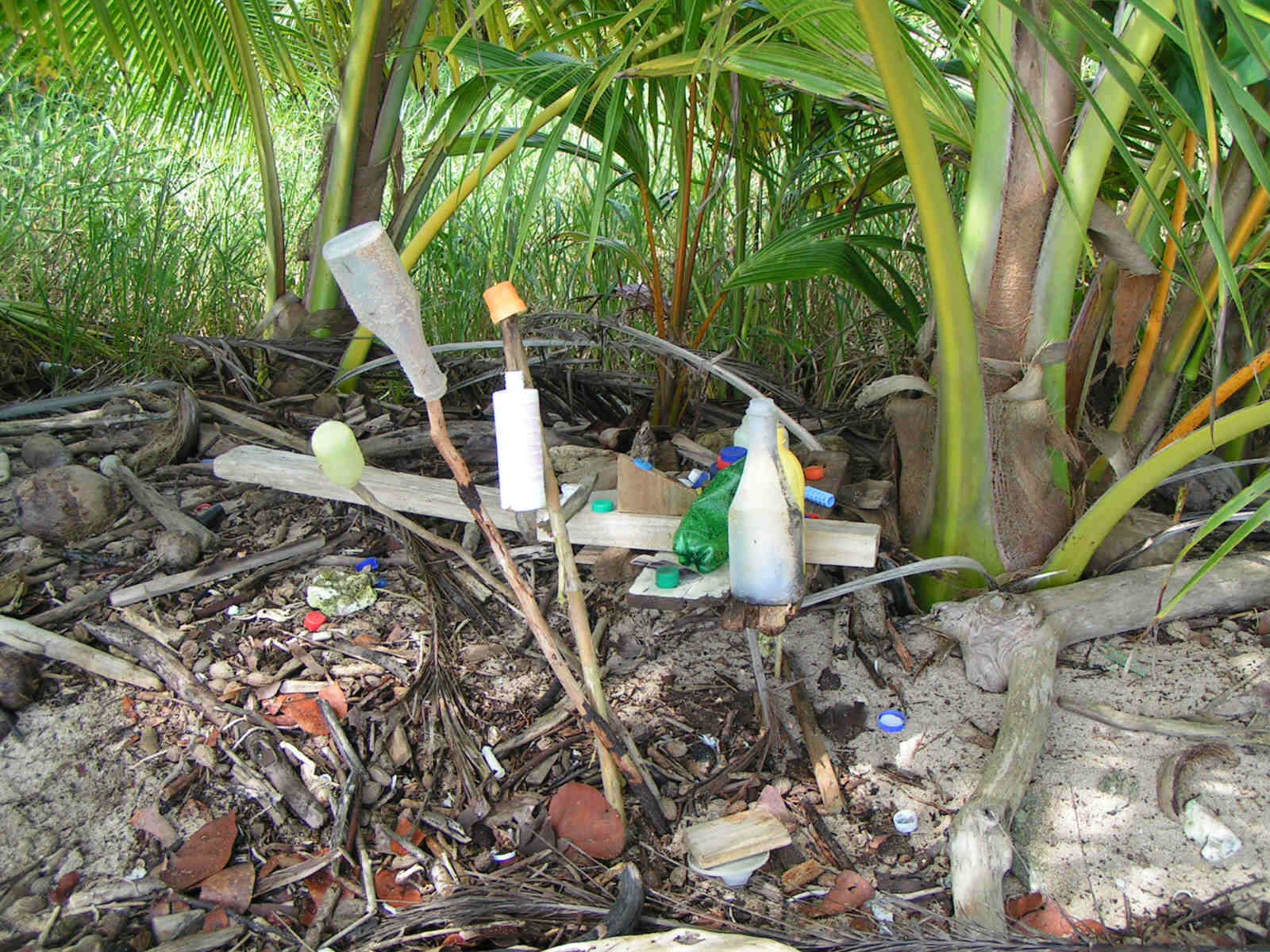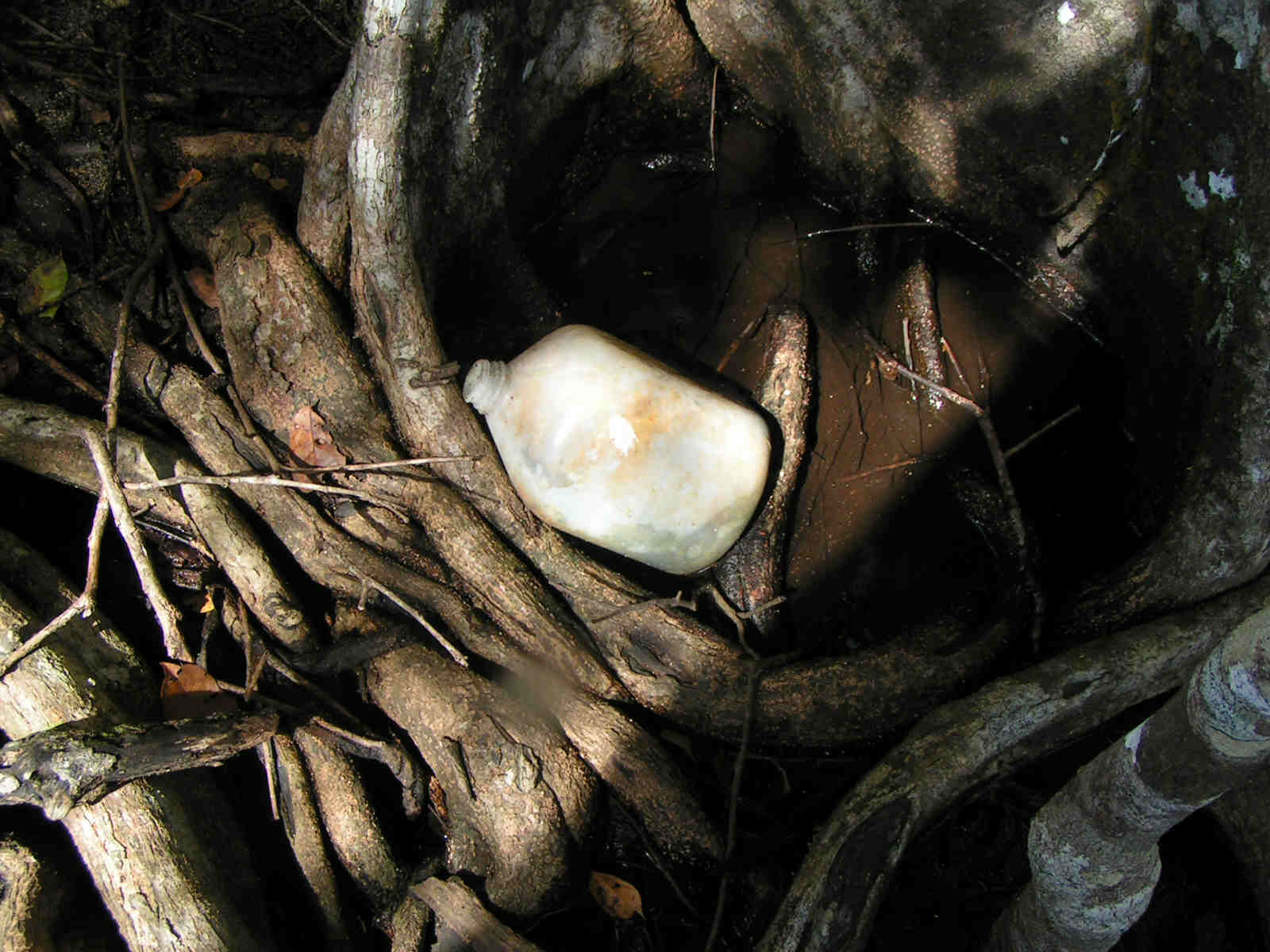Plastic
Never, Ever Goes Away...
In our travels, we've
visited hundreds of beaches and explored thousands of miles of coastline, from
California to Panama and to Hawaii. We've walked the sterile beaches of
high-end resorts in Mexico, devoid of anything living above or below the sand
except the throngs of human tourists who visit each and every day. We've
explored rocky shores teaming with life in its many varied and wonderful forms
on secluded islands in remote islands of Panama and the Gulf of Fonseca that see
perhaps a dozen people a year if that. But in all our travels and on every
beach and every shore we have ever visited and over a thousand miles offshore,
there is a common constant : garbage.
 Every beach, every shore, from the most visited to the least
that we have ever explored has garbage littered along and above the high tide
line. It floats there from near and far, carried by winds and waves and
tides. Some shores, usually near human habitats, are literally
covered in it, the debris so thick that you can't see the ground. But even
the most secluded beach on the remotest island has garbage to a greater or
lesser extent, strewn along its entire length. We carry garbage bags with
us sometimes when we go ashore and fill them in minutes, taking them back with
us to civilization for "proper" disposal in a landfill somewhere, but
the clean up task is monumental and getting worse with every passing day.
Why? Because almost exclusively, that garbage is made of plastic and
plastic never goes away.
Every beach, every shore, from the most visited to the least
that we have ever explored has garbage littered along and above the high tide
line. It floats there from near and far, carried by winds and waves and
tides. Some shores, usually near human habitats, are literally
covered in it, the debris so thick that you can't see the ground. But even
the most secluded beach on the remotest island has garbage to a greater or
lesser extent, strewn along its entire length. We carry garbage bags with
us sometimes when we go ashore and fill them in minutes, taking them back with
us to civilization for "proper" disposal in a landfill somewhere, but
the clean up task is monumental and getting worse with every passing day.
Why? Because almost exclusively, that garbage is made of plastic and
plastic never goes away.
 Plastic and it's close relatives such as Styrofoam,
polypropylene and polystyrene, is what we see on every beach on every shore of
every place we visit. Unlike metal or cloth or leather or paper or glass
or most of the other substances we humans discard, intentionally or
unintentionally, plastic is the garbage that never disappears, never degrades,
never goes away. Most everything else we throw away rusts or bio-degrades
or otherwise eventually returns to the inert or organic constitute components
from which is was made. Not plastic. It may break into smaller
pieces, eventually after many years of sand and surf becoming a kind of plastic
dust with its own set of problems, but it never, ever really goes away. I
am quite sure that thousands of years from now, future geologists will have no
problem recognizing this era in history by the layer of plastic dust in the
geological record.
Plastic and it's close relatives such as Styrofoam,
polypropylene and polystyrene, is what we see on every beach on every shore of
every place we visit. Unlike metal or cloth or leather or paper or glass
or most of the other substances we humans discard, intentionally or
unintentionally, plastic is the garbage that never disappears, never degrades,
never goes away. Most everything else we throw away rusts or bio-degrades
or otherwise eventually returns to the inert or organic constitute components
from which is was made. Not plastic. It may break into smaller
pieces, eventually after many years of sand and surf becoming a kind of plastic
dust with its own set of problems, but it never, ever really goes away. I
am quite sure that thousands of years from now, future geologists will have no
problem recognizing this era in history by the layer of plastic dust in the
geological record.
 And far from being simply unsightly, plastic kills.
Perhaps you have seen seen the posters at an aquarium or zoo which depict a wild
Blue Heron with a plastic 6-pack ring caught in its beak or a sea lion adorned
with discarded fishing line cutting into its neck. They are moving scenes,
even when glimpsed in passing on a poster, but we've seen that and more than
that with our own eyes. In particular and all too often, we've discovered
the dead bodies of birds and fish and turtles that were killed by plastic.
We find them on the beaches where their bodies wash up. Sadly, it's a
common occurrence to find the rotting corpse of a skeleton of a Brown Pelican or
a Giant Puffer Fish or a Bat Ray washed up on shore, surrounding the brightly
colored plastic bottle cap or plastic bag that killed it.
And far from being simply unsightly, plastic kills.
Perhaps you have seen seen the posters at an aquarium or zoo which depict a wild
Blue Heron with a plastic 6-pack ring caught in its beak or a sea lion adorned
with discarded fishing line cutting into its neck. They are moving scenes,
even when glimpsed in passing on a poster, but we've seen that and more than
that with our own eyes. In particular and all too often, we've discovered
the dead bodies of birds and fish and turtles that were killed by plastic.
We find them on the beaches where their bodies wash up. Sadly, it's a
common occurrence to find the rotting corpse of a skeleton of a Brown Pelican or
a Giant Puffer Fish or a Bat Ray washed up on shore, surrounding the brightly
colored plastic bottle cap or plastic bag that killed it.
 So what do we do? Well, after seeing the global and international
extent of the problem first hand, we have become convinced that the problem will
not be solved by simple, traditional, US-centric, consumer-side answers.
Many people for example, might call for more stringent laws against littering or
more prevalent recycling, but the problem is an international one and many of
the worse offenders are countries whose governments cannot even build roads much
less afford wide-spread recycling or enforce environmental laws. What's
more, even if every piece of plastic in every country on the planet were
properly disposed of, it still lasts forever and some of it would still find
it's way into the oceans and onto the beaches. How? Here's an
example: There are many tens of thousands of small commercial fishermen in
Central America, one or two man operations using small boats called pangas and a
small outboard motor (the initial cost of both are often subsidized by the large
fishing co-op to which they can become essentially indentured and to which they
sell their fish exclusively). They are everywhere (we've encountered these
sturdy little open boats over 100 miles offshore!) and we've had many close
calls dodging their unlit and often unmarked nets and long-lines, day and night.
These fishermen barely make a living catching what they can from the ocean's
dwindling resources and they can barely afford the raw supplies to make their
nets and hook their long-lines. So what do these fishermen use for net or
line floats? You got it: 2-liter plastic beverage bottles. We've
seen hundreds of them at a time, strung every 20 or 30 feet, floating 5-mile
long lines, in every sea and gulf we've been in, from Mexico to Costa Rica.
Often the bottles we find on shore have broken fishing line tied to them.
So what do we do? Well, after seeing the global and international
extent of the problem first hand, we have become convinced that the problem will
not be solved by simple, traditional, US-centric, consumer-side answers.
Many people for example, might call for more stringent laws against littering or
more prevalent recycling, but the problem is an international one and many of
the worse offenders are countries whose governments cannot even build roads much
less afford wide-spread recycling or enforce environmental laws. What's
more, even if every piece of plastic in every country on the planet were
properly disposed of, it still lasts forever and some of it would still find
it's way into the oceans and onto the beaches. How? Here's an
example: There are many tens of thousands of small commercial fishermen in
Central America, one or two man operations using small boats called pangas and a
small outboard motor (the initial cost of both are often subsidized by the large
fishing co-op to which they can become essentially indentured and to which they
sell their fish exclusively). They are everywhere (we've encountered these
sturdy little open boats over 100 miles offshore!) and we've had many close
calls dodging their unlit and often unmarked nets and long-lines, day and night.
These fishermen barely make a living catching what they can from the ocean's
dwindling resources and they can barely afford the raw supplies to make their
nets and hook their long-lines. So what do these fishermen use for net or
line floats? You got it: 2-liter plastic beverage bottles. We've
seen hundreds of them at a time, strung every 20 or 30 feet, floating 5-mile
long lines, in every sea and gulf we've been in, from Mexico to Costa Rica.
Often the bottles we find on shore have broken fishing line tied to them.
So, we have become convinced that the only real solution that
will truly make a difference is one where non-biodegradable plastic simply isn't
produced and manufactured in the first place, at least not for everyday consumer
items where packaging that lasts forever simply isn't needed.
By far, the most common items we see on the beaches we've
visited are plastic beverage bottles. Other food containers such as
plastic milk cartons and butter or cottage cheese style containers are nearly as
common as are non-food items such as buckets, milk-crates, bleach bottles,
plastic deodorant dispensers, shampoo bottles and plastic 1-quart oil
containers. Plastic shoes (particularly the soles of cheap, gaudy
plastic sandals and open-toed shoes popular in warmer climates) also seem to be
particularly abundant. Long after any cloth or leather portion has rotted
away, the plastic lives on.
Do these items really need to last so long? Bio-degradable plastics do
exist, the expected lifetimes of which can be tuned in the manufacturing process
from months to tens of years or more, depending upon the application and
required lifetime. Why aren't they used? The only answer we
can think of is money - they must cost more to produce - or there may simply be
insufficient public, industry and governmental awareness of the issue and
subsequently, little demand or pressure for their widespread usage.
This must change someday. One day, we hope the world will
come to see the utilization of plastics that never degrade to package soda pop
or potato chips as inexcusable as using PCBs or DDT or Asbestos is viewed today.
But until that day comes, we have made the personal decision to purchase as
little plastic as possible, preferring almost any other packaging option.
We stopped drinking soda pop or only purchase exclusively in cans, even though
it can be a more expensive option. And when the check-out girl asks us
"Paper or plastic?", we know how to answer (actually, we bring our own
cloth shopping bags when we provision). The personal satisfaction of
knowing we are doing something, even if it is just a couple of consumers making
more educated purchasing choices, outweighs any inconvenience or added expense.
After years of exploring beaches and seeing the results of our worldwide
plastics industry, we are more aware of the long-term consequences of our own
purchasing habits on their environment and on the beaches and wildlife we have
come to love.

